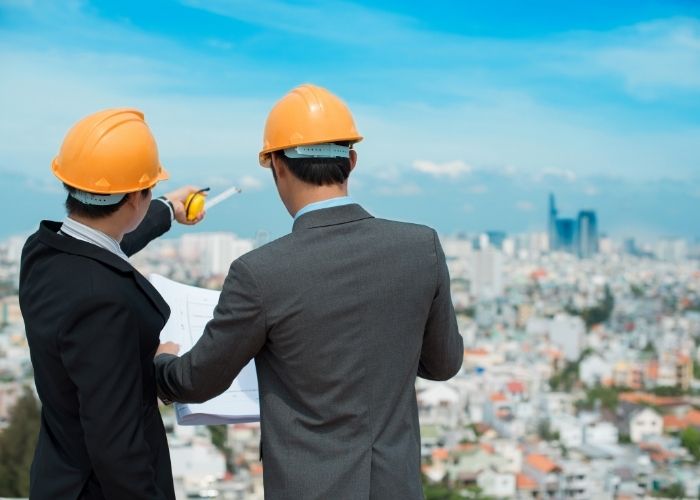MARBELLA – Under the former infamous mayor Jesus Gil y Gil, approximately 18,000 Marbella properties were built without the required permits or with illegally issued permits. Numerous lawsuits later, it seems likely the houses will be allowed to remain.
In the late 1990s, Marbella was a kind of Wild West, El País writes. The then-mayor Jesus Gil y Gil encouraged the construction of thousands of homes, mainly with greed as the motive. Residential towers and other residential areas sprung up like mushrooms on land that, according to the zoning plans at the time, were intended for schools, health centres, parks, and in a specific case for a bus station.
Illegal zoning
This unrestrained construction was based on a zoning plan (PGOU). The content of which was approved in 1998 during a nightly city council meeting. However, years later, courts thoroughly rejected its contents. Yet, with a few exceptions, most of those classified as illegal Marbella properties and buildings are still standing.
Operation Malaya
Gil, who died in 2002, was succeeded by Julian Muñoz, Marisol Yagüe and Tomás Riñones. All three maintained the same level of building frenzy and development. That is until they ended up in prison as a result of Operation Malaya. This was one of the biggest corruption cases in Spanish history. The entire municipal administration was fired and replaced.
The investigation into that case led authorities on an endless trail of corruption into hundreds of smaller cases. All of which dealt with illegal building permits. It concerned 18,000 illegally built Marbella properties. Since then, only a handful have been razed to the ground.
‘Shameful situation’
El País gives the example of 87-year-old Carmen Suárez. She was one of the victims of the rampant speculation in Marbella in the 1990s. Gil had a 12-storey tower built right in front of her small house with a garden and sea view. Although the tower was declared illegal a long time ago, Carmen continues to suffer the consequences. “We won all the lawsuits, but it makes no sense,” she says.
Her lawyer, Inmaculada Gálvez, has been fighting by her side for 23 years. She says “The situation is embarrassing and a source of despair. Eviction orders are carried out quickly, but those requiring a building like this to be demolished are forgotten.” For Gálvez the struggle has become personal.
Gálvez sees a clear case of “disobedience” by Marbella city council, which is now led by Ángeles Muñoz of PP. “They have never had the will to solve the problem, not them and not the government of Andalucia. They will not take on the enforcement.”
Decree to legalisation
Under the law, an administrative act resulting from a crime is null and void. This was the basis for declaring hundreds of housing permits illegal. The regional government, which issued a decree in 2019 that could lead to the legalisation of more than 327,000 homes across Andalucia, says it has “systematically” required the city of Marbella to follow instructions in court rulings.
In addition, the city council approved new urban planning regulations in 2010 to legalise the vast majority of these homes. However, ‘Demolition with compensation’ by owners and project developers was rejected by the Supreme Court in 2015. The argument was that a zoning plan cannot be used to give legal status to previous unlawful acts. This has led to Marbella still being guided by a zoning plan from 1986. The irregularly declared houses remain.
Conviction of those involved
Fernando Benitez is a prosecutor in the province of Malaga and is committed to enforcement. He explains that in Marbella’s case, it is likely that no houses will be torn down. Because most of the court’s adverse rulings deal with crimes committed by elected officials who deliberately made illegal decisions. This usually results in prison terms, fines, and a ban on public office for the officials in question. However, not in the demolition of the houses they were allowed to build.
Demolition would do more harm than good
Demolition of all those houses would also do more harm than good, according to Benítez. He does, however, argue that the local government should think about all those residential areas, where hundreds of people now live. “One should consider what can be preserved, changed or demolished from a city planning point of view.”
Enrique Sánchez, head of the city’s legal department for eight years, thinks many of these buildings will eventually be assimilated. Despite staying outside the scope of land use laws.
Fitting illegal Marbella properties into new city model
Moreover, Marbella officials are now working on a solution. A new PGOU is looking for ways to fit the illegal houses into the new city model. It is hoped the plan’s first approval will take place sometime this year. This would be under the umbrella of a new regional sustainability law called LISTA. However, according to legal experts, the new plan will largely meet the needs of the real estate market.
System based on land repurposing
Sources at the environmental group Ecologists in Action say Marbella has never stopped building despite the lack of public infrastructure. New neighbourhoods are being built while the road network remains exactly the same, with all the associated consequences. The system continues to be based on the repurposing of land previously prohibited from building on. “Unbridled development is still going on,” said the same source. “We haven’t learned to be sustainable, just to twist the rules to make illegal things legal. In Marbella, the word demolition just doesn’t exist.”


